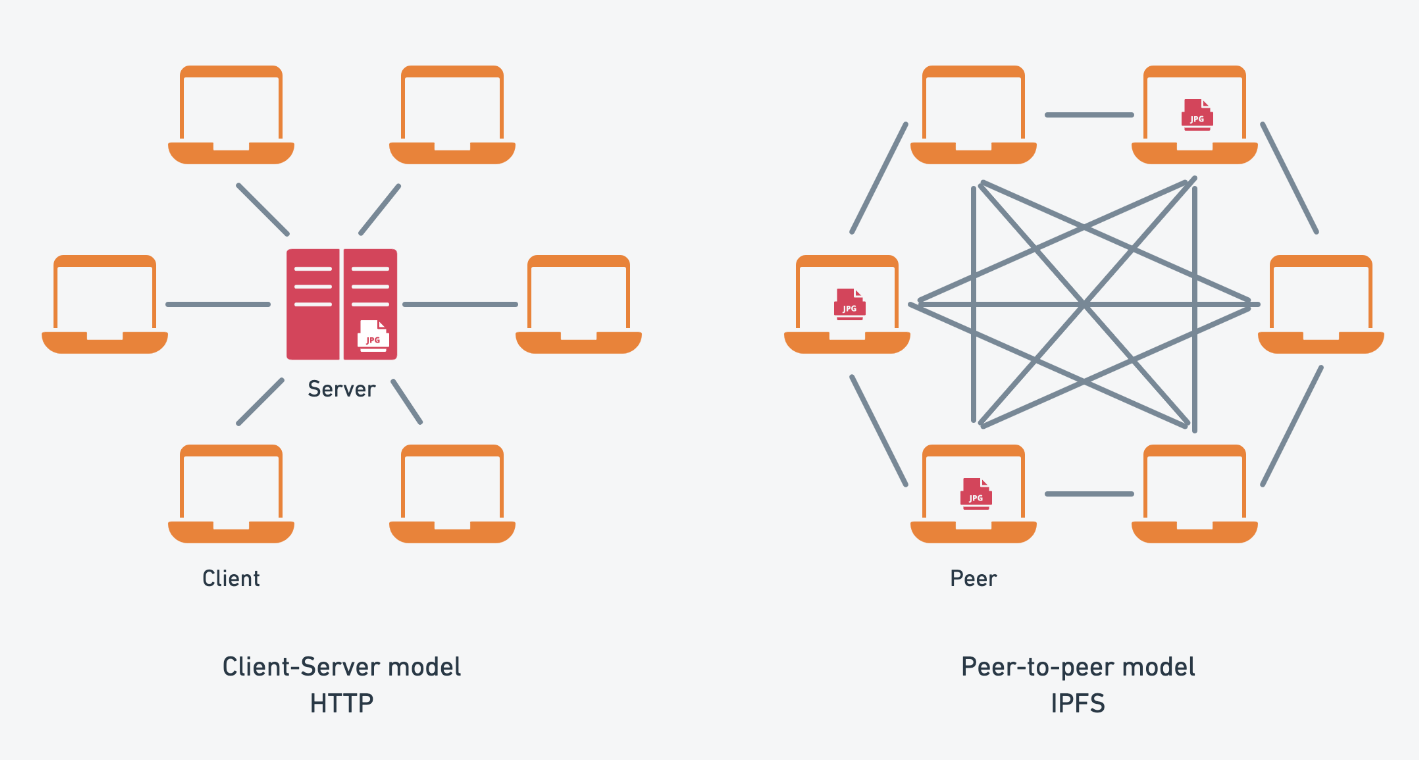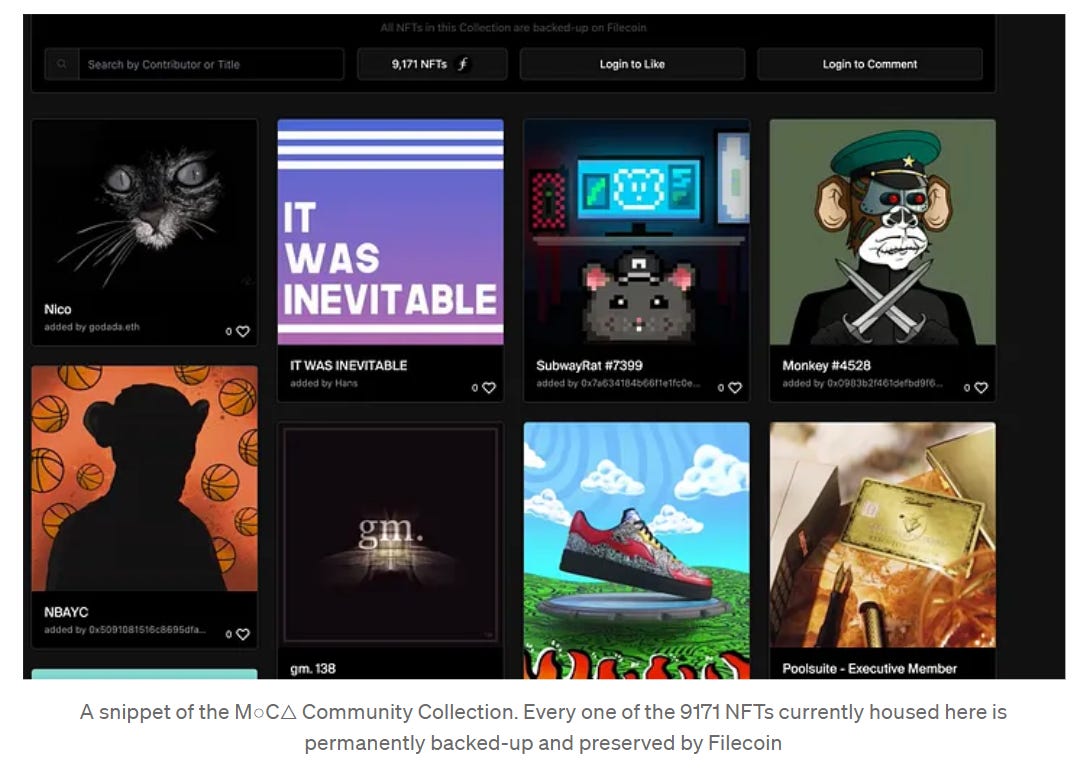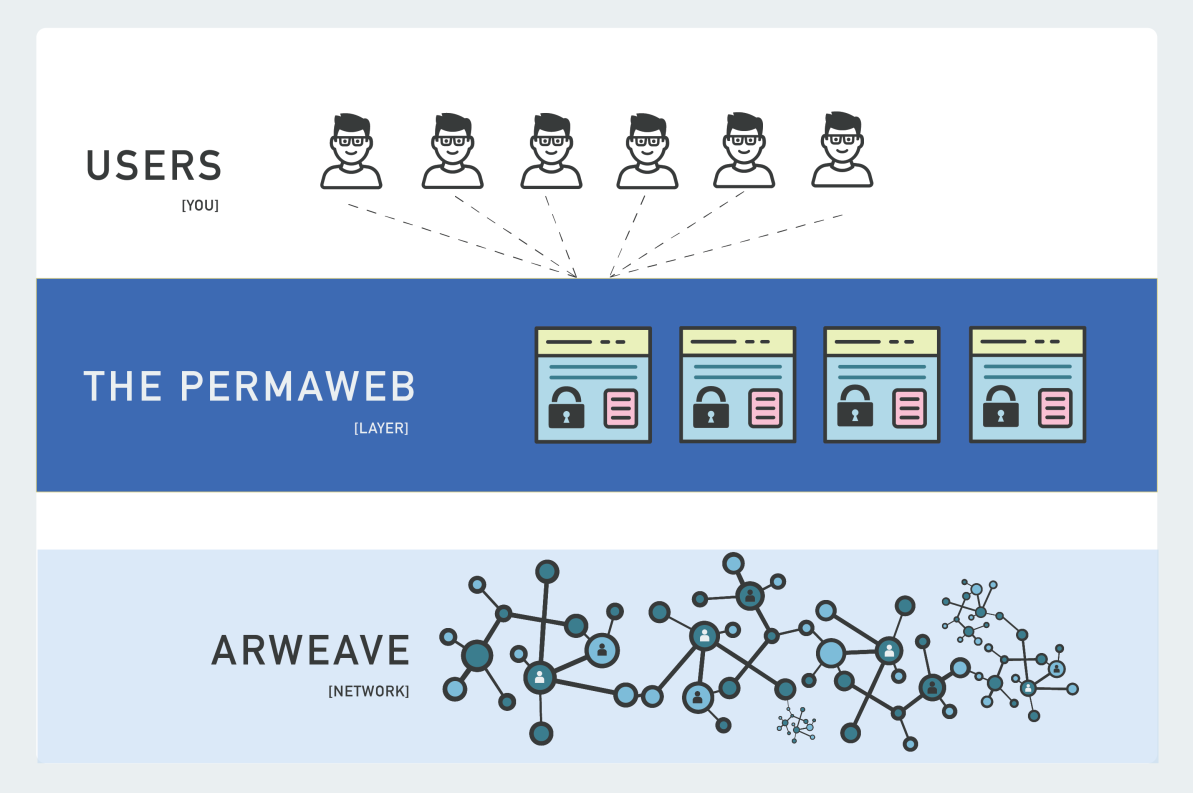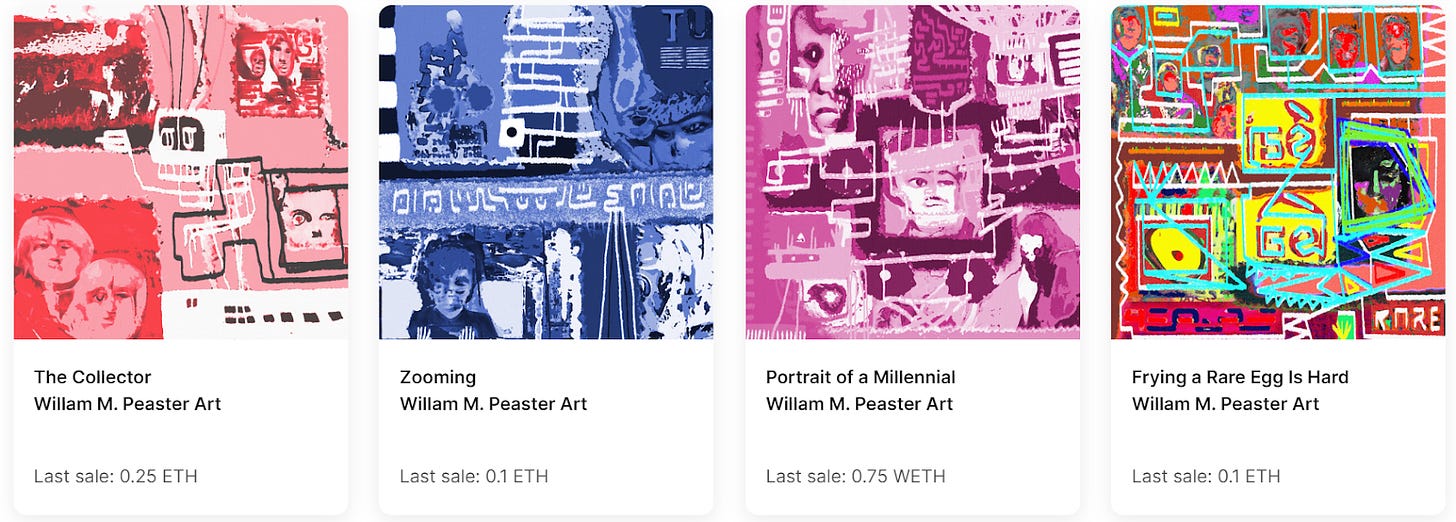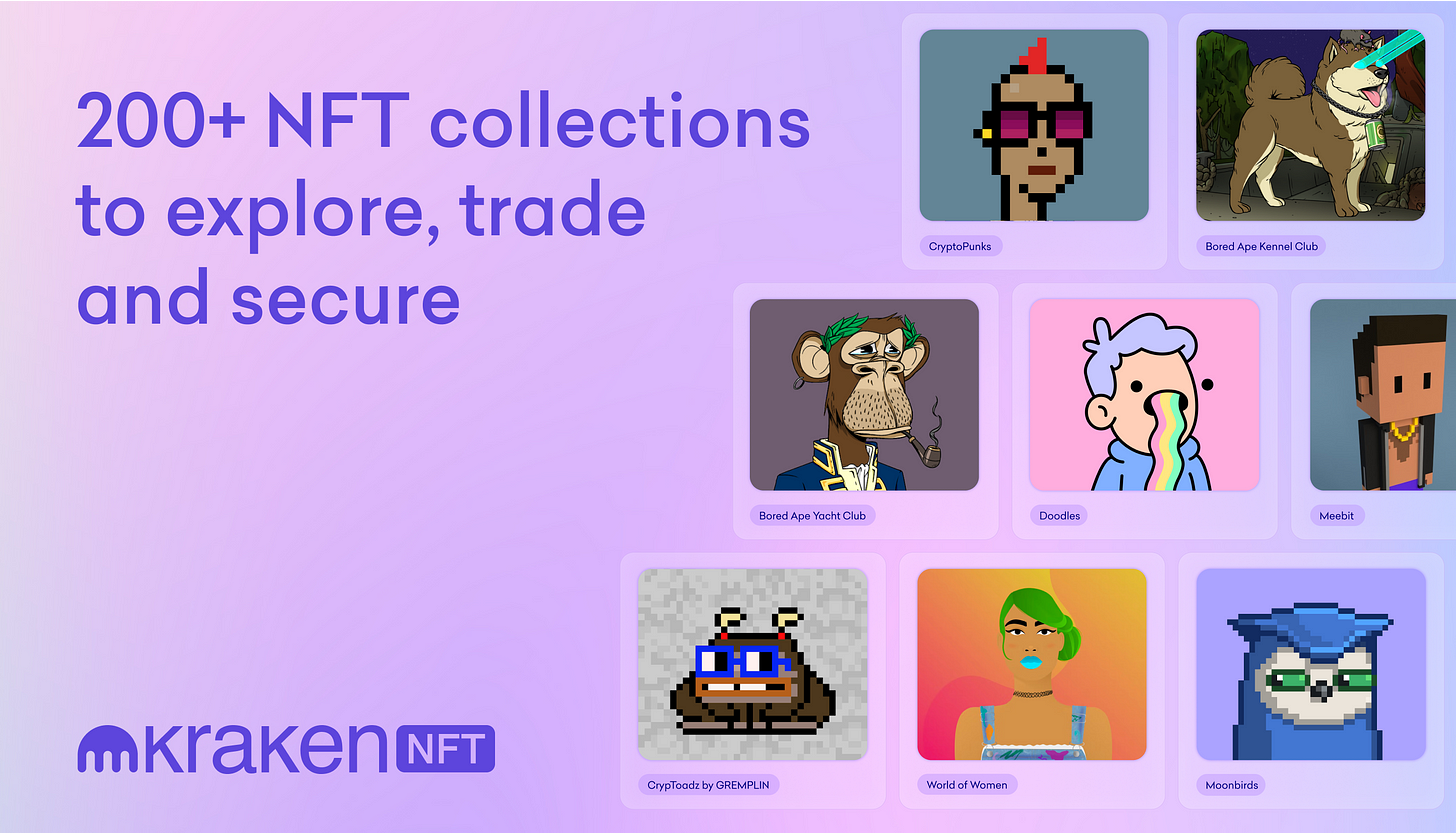Metaversal is a Bankless newsletter for weekly level-ups on NFTs, virtual worlds, & more!
Dear Bankless Nation,
When it comes to the subject of NFT storage, understanding the fundamentals of IPFS, Filecoin, and Arweave is essential.
These solutions provide alternatives to onchain storage, and each has its own unique architectures and trust assumptions.
Whether you’re an artist, collector, or enthusiast, grasping these basics will sharpen your NFT expertise and empower you to make informed decisions here. Let’s get you up to speed on these fundamentals for today’s post!
-WMP
🙏 Sponsor: Kraken — Kraken NFT is built for secure NFT trading ✨
NFT Storage Explained: IPFS, Filecoin, and Arweave
The basics of NFT storage
We’ve recently explored onchain NFTs and what I call the offchain-onchain spectrum. For anyone just now catching up, keep in mind:
-
NFTs can store there art and metadata through a range of different approaches, from centralized servers, which offer the least guarantees and are likeliest to fail over time, to fully onchain storage, which is when an NFT stores its art and metadata on the same chain as its token exists, so it will “live” as long as the blockchain, e.g. Ethereum, lives.
-
However, Ethereum and many other blockchains aren’t optimized for storage. In Ethereum’s case specifically, onchain storage is expensive, particularly for large file sizes, and in most cases to date has required technical expertise to pull off.
-
This is why popular NFT token standards, e.g. the OpenSea standard and the Enjin standard, allow for the use of Uniform Resource Identifiers (URIs), which can point to the location of a token’s art and/or metadata if it exists outside of Ethereum. For projects that want better decentralization guarantees than a centralized server can offer, the URI can be a link to a file on a decentralized file system like IPFS or a link via storage-centric blockchains like Arweave and Filecoin.
-
While these specialized solutions all have unique architectures, they all have better optimizations for distribution and/or storage compared to Ethereum, making them more affordable and more practicable compared to fully onchain storage for many NFT projects.
All that said, since IPFS, Filecoin, and Arweave are at the forefront of this NFT storage space, below let’s cover their basics and respectively lay out what they offer and their trust assumptions.
For example, Ethereum’s onchain storage approach offers good permanence guarantees, yet with onchain NFTs you’re still trusting that Ethereum will be around many years from now, or that NFT smart contract data won’t eventually be pruned (which surely would never happen, but you get the idea).
So what about trusting IPFS, Filecoin, or Arweave then, can they be reliable for a long time? Let’s see!
🏹 Settle, Hunt, Claim, Repeat.
Be more bankless and become a Bankless Citizen today!
The IPFS 101
The InterPlanetary File System, popularly shortened to IPFS, is a peer-to-peer (P2P) network for storing and sharing data in a distributed file system. It’s not a blockchain, but rather more like a torrenting system, e.g. BitTorrent, where data storage and distribution are facilitated but not incentivized. Data must be pinned through services like ClubNFT or Pinata to be maintained over time.
Zooming in, IPFS works by using a content-addressing system to uniquely identify each file in a global namespace designed to connect all computing devices. Instead of referring to files by their location on a server, IPFS refers to files by their hash, ensuring that the content is authentic and tamper-proof. And since this system is totally open, more than a few projects have been built on or around IPFS, like Ceramic, a platform for sharing decentralized data streams.
As for trust assumptions with IPFS, there are two main ones: trusting the network’s resilience to censorship and node participation, and trusting that you or someone else will be willing to pin content over time. The latter is what most will have to realistically consider and contend with.
For instance, let’s say 50 years from now a digital archaeologist wants to retrieve a particular NFT’s metadata from IPFS. They would need to locate a node that has pinned the desired NFT data, which should totally be possible if IPFS is still around. The decentralized nature of IPFS means that as long as one node has the data, it can be retrieved, yet this also means that without active pinning, data can be lost over time. So altogether then …
IPFS pros:
-
✅ Decentralized and distributed nature prevents single points of failure.
-
✅ Content-addressing ensures data authenticity and integrity.
-
✅ Efficient file retrieval through a global peer-to-peer network.
IPFS cons:
-
❎ Data permanence relies on nodes choosing to host (pin) the data.
-
❎ Less intuitive for users accustomed to traditional web addresses.
-
❎ Requires additional infrastructure, like pinning services, for reliable data availability.
The Filecoin 101
Filecoin is a decentralized storage blockchain that turns cloud storage into an algorithmic market. Built by the developers of IPFS, Protocol Labs, the network leverages IPFS for content addressing to facilitate the storage and retrieval of data. It introduces a layer of financial incentives, centered around its native crypto, FIL, to ensure files are stored across time.
In other words, Filecoin is a blockchain explicitly designed to store valuable information. It achieves this through a unique model where clients enter into storage and retrieval deals with miners, who provide storage space in exchange for FIL.
These deals are not merely contractual agreements but are verifiably enforced by the network, ensuring that miners uphold their commitments to store and serve data as agreed. This system of cryptographically-secure transactions ensures that every file stored on the Filecoin network is accounted for, with its history and future availability transparently recorded on the chain.
As for the Filecoin ecosystem, one notable example project that’s integrated the network as a storage solution is the Museum of Crypto Art. By using Filecoin and its FIL incentives, the crypto-native museum has doubled down on backing up its digital art collections for posterity.
When it comes to Filecoin’s trust assumptions, the main thing is users must place their confidence in the network’s crypto-economics that motivate storage providers to act honestly and reliably over time. The Filecoin protocol is designed to enforce its storage agreements and penalize providers who fail to meet their obligations, so this system working over the long-term is what you must trust.
Here, let’s again consider the case of a digital archaeologist, this time one who’s trying to access NFT data stored on Filecoin many years from now. They’d depend on the network’s continued adherence to FIL incentives, yet unlike a one-time payment model, Filecoin storage deals operate via ongoing agreements, meaning that for data to be retrievable in the distant future, storage deals would need to be continuously renewed at certain points over time.
Filecoin pros:
-
✅ Creates a competitive market for data storage, driving down costs.
-
✅ Blockchain-based deals enhance transparency and security.
-
✅ Direct integration with IPFS for efficient data retrieval.
Filecoin cons:
-
❎ Complexity in setup and node operation compared to simpler storage solutions.
-
❎ Potential for higher costs due to the incentivization of storage.
-
❎ Market-driven nature can introduce price volatility for storage services.
The Arweave 101
Arweave is another pioneer in the decentralized storage space, with its main thrust being its aim to offer permanent data storage over time through its blockchain-like blockweave system. At its heart lies a crypto-economic model based around its AR token that charges users an upfront one-time fee, which is calculated to sustain the storage of data forever.
This fee is split, with a portion going to miners for adding data to the blockchain and the rest placed into a storage endowment. This endowment is then maintained, with the goal that as storage technology becomes cheaper, the endowment will always be able to fund miners to keep the data available on the network.
Looking ahead, Arweave does have an evolution process in place for its protocol to better future-proof it, and the blockchain’s community operates on the principle that even though the network may one day reach its last block, the data within it is meant to be everlasting, migrating through successive storage technologies, much like historical archives have moved from medium to medium over time.
All that said, if we consider “fully onchain” NFTs to be those where the token and its associated art/metadata are stored on the same blockchain, then Arweave enables a “generally onchain” approach. Here, the token may reside on one blockchain, such as Ethereum, while the art/metadata are stored on Arweave. The Arweave community has taken this a step further with the creation of Atomic Assets, where the smart contract, metadata, and asset data of an NFT are tightly coupled as a single entity across Ethereum and Arweave.
Like IPFS, Arweave also has its share of projects building on and around it. Solana has previously used it as a storage layer. Irys is a provenance layer atop it. It’s also where NFT creator tools platform Manifold stores its NFT metadata. There are many others, like ArDrive, Mirror, Paragraph, and beyond.
As for Arweave’s trust assumptions, these are namely trusting that the network will continue to exist with active participation, and trusting that its crypto-economic approach can keep its endowment model sustained for long-term data preservation. Considering a digital archaeologist’s perspective, if these assumptions hold then Arweave’s design is meant to facilitate the discovery of data far into the future. The real test will be the network’s operational state over an extensive period of time.
Arweave pros:
-
✅ A single payment ensures data storage for an indefinite period.
-
✅ Blockchain storage guarantees data immutability and resistance to censorship.
-
✅ Eliminates the need for ongoing storage costs, simplifying long-term data management.
Arweave cons:
-
❎ The promise of permanent storage is contingent on the enduring success of the Arweave network.
-
❎ Initial costs are higher in comparison to traditional storage services, i.e. there’s an upfront premium for permanence.
The big picture
When directly comparing IPFS, Filecoin, and Arweave to each other, we must consider their unique architectures and the different user experiences they offer.
To reiterate, IPFS operates on a model where data is pinned by nodes that choose to store it, with no built-in economic incentives. Filecoin adds a layer of financial incentives over IPFS, creating a marketplace for storage where users pay for their data to be stored over time. Arweave, on the other hand, offers a one-time payment for what is designed to be permanent storage, with an endowment model built to sustain this promise.
From an end-user perspective, IPFS is extremely dependable and redundancy-friendly but it does require active management to ensure data remains accessible, while Filecoin operates on a more familiar cloud storage-like model with ongoing costs, albeit in decentralized fashion. Here Arweave’s proposition is particularly distinct, as it offers an upfront pay-once model that could potentially outlast the user, assuming the network’s longevity.
Zooming out some, it’s important to keep in mind that traditional digital preservation efforts aren’t quests for a singular storage solution but oftentimes entail an embrace of various technologies. Over time NFT storage likely won’t prove any different here as more and more projects use simultaneous storage approaches, like Ethereum + IPFS + Arweave.
Indeed, I was using this triple-storage combo back in 2020 when minting my art on the now-defunct InfiNFT platform! First, it starts as a trickle … but over time will it become more of a standard?
We’ll see!
Yet if used with care IPFS, Filecoin, and Arweave are all viable storage solutions in their own rights and don’t have to be combined. There’s no right or wrong way here per se, just unique architectures with their own respective styles and trust assumptions that you have to take into consideration.
Double up if you want, like Larva Labs did with IPFS + Ethereum. Triple them up like I’ve done before on InfiNFT with IPFS + Arweave + Ethereum. Projects can approach NFT storage however they see fit, and toward this end it’s great to have a handful of good open options like we do now.
Also, I’ll just lastly add that from the perspective of an NFT collector and consumer, it’s great to have a handle on these basics of NFT storage because assessing a project’s approach to metadata storage is key to analyzing the quality of its NFTs both individually and collectively. That you can now reason through the offerings of the top NFT storage solutions, including onchain storage, will make you a sharper and wiser NFTer in general.
Action steps:
-
😬 Catch up on my previous weekly roundup: FTX NFTs
-
📚 Collect this post: Mint it on Mirror
A Bankless Citizen ⚑ turned $264 into $6,077 last year. A 22x ROI 🚀 in a bear market!
🙏Thanks to our sponsor
KRAKEN NFT
Kraken NFT is one of the most secure, easy-to-use and dynamic marketplaces available. Active and new collectors alike benefit from zero gas fees, multi-chain access, payment flexibility with fiat or 200+ cryptocurrencies, and built-in rarity rankings. Learn more at Kraken.com/nft
👉 Visit Kraken.com to learn more and open an account today.
Not financial or tax advice. This newsletter is strictly educational and is not investment advice or a solicitation to buy or sell any assets or to make any financial decisions. This newsletter is not tax advice. Talk to your accountant. Do your own research.
Disclosure. From time-to-time I may add links in this newsletter to products I use. I may receive commission if you make a purchase through one of these links. Additionally, the Bankless writers hold crypto assets. See our investment disclosures here.


